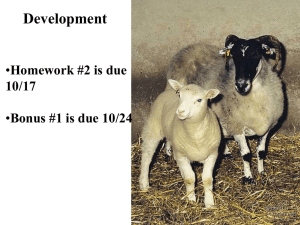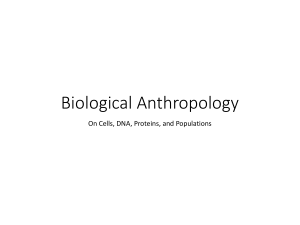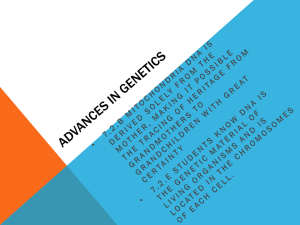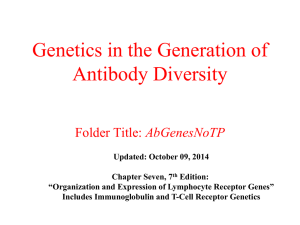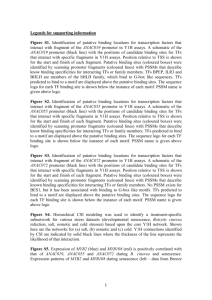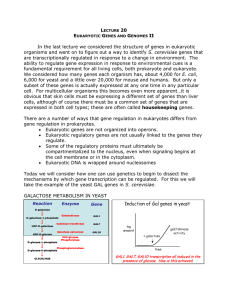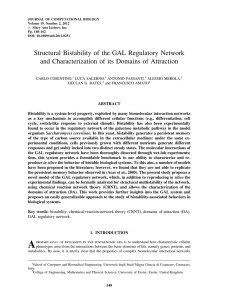Review Questions Lecture 4 answers
advertisement
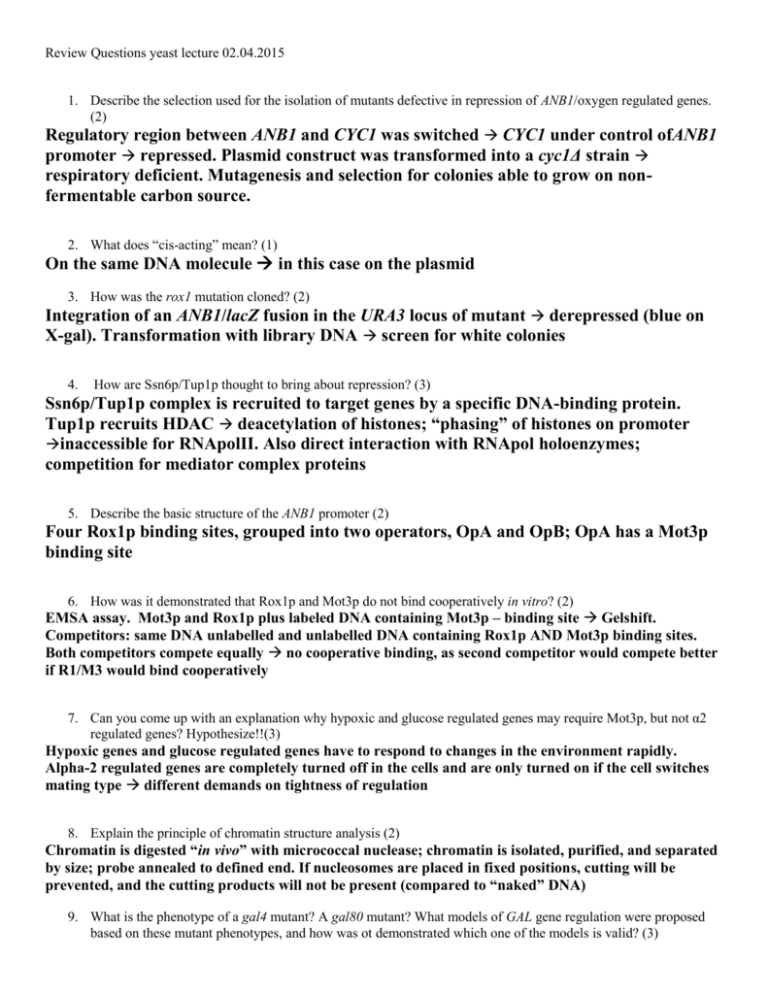
Review Questions yeast lecture 02.04.2015 1. Describe the selection used for the isolation of mutants defective in repression of ANB1/oxygen regulated genes. (2) Regulatory region between ANB1 and CYC1 was switched CYC1 under control ofANB1 promoter repressed. Plasmid construct was transformed into a cyc1Δ strain respiratory deficient. Mutagenesis and selection for colonies able to grow on nonfermentable carbon source. 2. What does “cis-acting” mean? (1) On the same DNA molecule in this case on the plasmid 3. How was the rox1 mutation cloned? (2) Integration of an ANB1/lacZ fusion in the URA3 locus of mutant derepressed (blue on X-gal). Transformation with library DNA screen for white colonies 4. How are Ssn6p/Tup1p thought to bring about repression? (3) Ssn6p/Tup1p complex is recruited to target genes by a specific DNA-binding protein. Tup1p recruits HDAC deacetylation of histones; “phasing” of histones on promoter inaccessible for RNApolII. Also direct interaction with RNApol holoenzymes; competition for mediator complex proteins 5. Describe the basic structure of the ANB1 promoter (2) Four Rox1p binding sites, grouped into two operators, OpA and OpB; OpA has a Mot3p binding site 6. How was it demonstrated that Rox1p and Mot3p do not bind cooperatively in vitro? (2) EMSA assay. Mot3p and Rox1p plus labeled DNA containing Mot3p – binding site Gelshift. Competitors: same DNA unlabelled and unlabelled DNA containing Rox1p AND Mot3p binding sites. Both competitors compete equally no cooperative binding, as second competitor would compete better if R1/M3 would bind cooperatively 7. Can you come up with an explanation why hypoxic and glucose regulated genes may require Mot3p, but not α2 regulated genes? Hypothesize!!(3) Hypoxic genes and glucose regulated genes have to respond to changes in the environment rapidly. Alpha-2 regulated genes are completely turned off in the cells and are only turned on if the cell switches mating type different demands on tightness of regulation 8. Explain the principle of chromatin structure analysis (2) Chromatin is digested “in vivo” with micrococcal nuclease; chromatin is isolated, purified, and separated by size; probe annealed to defined end. If nucleosomes are placed in fixed positions, cutting will be prevented, and the cutting products will not be present (compared to “naked” DNA) 9. What is the phenotype of a gal4 mutant? A gal80 mutant? What models of GAL gene regulation were proposed based on these mutant phenotypes, and how was ot demonstrated which one of the models is valid? (3) gal4: uninducible; gal80: constitutive. Models: 1. Gal80p is the repressor of GAL genes; Gal4p inactivates Gal80. 2. Gal4p is the activator of GAL genes; Gal80 is the repressor (inactivates Gal4p). Epistasis analysis to determine which is true. Creation of double mutant: if constitutive, 1) is true, if uniducible, 2) is true. (Uninducible) 10. How were GAL4 and GAL80 cloned? (2) GAL4: Transformation of cells and plating on medium containing only galactose as carbon source selection for survivors. GAL80: grow cells on 2-deoxygalactose (kills GAL+I cells) select survivors 11. Describe the basic features of the Gal4p activator (1) N-terminal DNA binding (Zn2+-finger) and dimerization domain , C-termial activation and Gal80p interaction domain. DNA-binding domain and activation domain can work independently of each other 12. What experiment(s) demonstrated the modular nature of Gal4p? (2) Fusion of DNA-binding domain to heterologous activation domain – could activate reporter gene from GAL promoter. Fusion of activation domain o heterologous DNA binding domain – could activate reporter gene under control of a promoter containing binding sites for DNA binding domain (lexA) 13. What are the main factors and processes in Glucose repression? (2) Mig1p; DNA binding protein, repressor of glucose-regulated genes. Ssn6-Tup1, global yeast repressor module, recruited by Mig1p to its target genes. 14. What role does Gal3p play in GAL gene regulation? (2) Gal3p is homologous to the enzyme galactokinase and the galactose sensor. Gal3p interacts physically with Gal80p. When Galactose is available, Gal3p binds to galactose and upon binding causes Gal80p to dissociate from Gal4p Gal4p active 15. Through which mechanism s Gal4p supposed to activate transcription? (2) Recruitement of Histone acetyltransferases (HATs); perturbation of nucleosomes positioned over TATA box; also direct interaction with TATA binding protein recruitment of RNApolII 16. What protein expression/overexpression systems did you hear about in class, and what is the expression of genes dependent on in these systems? (2) Gal4p activated overexpression – Oleate induction; expression dependent on carbon source: Repressed on Glucose, derepressed on other carbon source, activated by galactose or oleate



